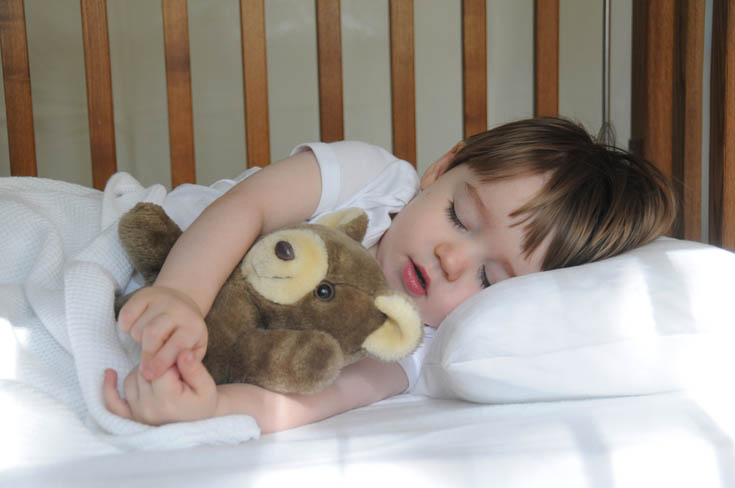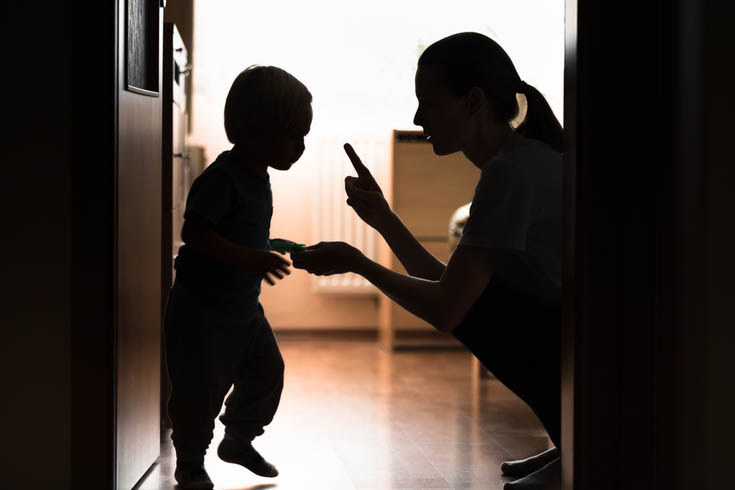One of the biggest challenges for most parents is good sleep. When kids aren’t getting it, neither are parents — and that means no one is happy. But it’s perfectly normal for children of all ages to have sleep issues that change as they grow, which means it’s especially important to build and follow a consistent routine that’s both calming and familiar.
To help kids and parents get the sleep they very much need, I’ve assembled a parents’ guide to helping children sleep, which includes valuable insights from Dr. Harvey Karp, a pediatrician and child development expert.
The First Thing You Should Know: Every Child Is Different
All children are unique, as are their sleep tendencies. Don’t get caught up with comparisons — just because an older child started sleeping through the night at a certain age doesn’t mean that a younger sibling will do the same. Children develop differently, which means their sleep experiences vary — sometimes significantly. If you’re concerned or you have any questions, speak with your child’s pediatrician.
How Much Sleep Does My Child Need?
A child’s sleep needs change from infancy to adolescence. Here’s what The American Academy of Sleep Medicine (AASM) recommends for appropriate sleep duration.
For babies, Stanford Children’s Health has a more thorough breakdown:
Newborns and Infants
“Babies zero to four months often struggle with sleep because the environment they’re born into is so different from the one they were used to in utero,” says Karp. He recommends doing your best womb impersonation — using motion, low rumbly white noise, and snug swaddling — to soothe crying and boost sleep.
One of the best ways to do this, says Karp, is with the 5 S’s: swaddling, shushing, swinging, sucking, and holding the baby in a stomach/side position. “The 5 S’s don’t just mimic the calming sensations experienced in the womb, they activate a newborn’s calming reflex, which is their natural ‘off switch’ for fussing and crying and ‘on switch’ for sleep,” he explains.

While newborns spend much of their time sleeping, they wake every few hours to be fed, though there’s often no set schedule, especially in the earliest days. While all babies are different, it’s typical for babies to follow this schedule until they’re around three months old or weigh 12 to 13 lbs. At that point, many babies begin sleeping for longer stretches — six to eight hours at a time, which is what’s considered sleeping through the night. Some babies, however, can take a year or even longer to consistently sleep through the night.
Once babies are sleeping for these longer durations, their daytime naps are likely to become less frequent. Instead of napping on and off throughout the day, a six-month-old baby typically naps two or three times a day: in the midmorning, in the early afternoon, and again in the late afternoon.
But this transition to fewer naps can have plenty of stops and starts. Overstimulation, being over-tired, separation anxiety, and other factors can interfere with a regular nap schedule. It can be challenging in the moment, but keep in mind that most babies grow out of this phase.
Toddlers
Toddlers experience tremendous change in their busy little lives. While they should be getting 11 to 14 hours of sleep every day, most toddlers get closer to 10 hours. That’s likely because they’re easily distracted.
“Toddlers are very curious, so it’s important to reduce as many outside — and inside — distractions as you can at sleepytime,” advises Karp. They may also have newfound fears and anxieties about sleeping in the dark or away from their trusted grownup, he says. That can throw a wrench into a toddler’s usual sleep routine.
Ideally, toddlers have a bedtime around 7 to 9 p.m. and wake up between 6 and 8 a.m. with a daily nap that spans from one to three hours or so. Some toddlers, however, do better with two shorter naps, depending on when they get up and go to bed.

Preschoolers
Children between the ages of three and five need 10 to 13 hours of sleep during a 24-hour window. Those on the younger end may still need a regular nap, but it’s something that children typically outgrow around age five. Still, that depends on when they’re going to sleep and waking up in the mornings.
School-Age Kids
Children who are in school full-time are typically past the napping stage, and their busy schedules can make it challenging to get enough sleep. Between school, after-school activities, and homework, many children are staying up later and getting up earlier to make it to school on time. Be mindful of overscheduling children, who need 9 to 12 hours of sleep every day to support their growing bodies and minds.
Teenagers
Teenagers are another group who generally aren’t getting the sleep they need. While teens need eight to 10 hours of sleep every night, it’s estimated that most teens are only getting roughly seven hours. That can be blamed on internal and external factors.
Puberty can affect a teen’s circadian rhythm, shifting it back by around two hours. Instead of falling asleep around 9:00 p.m., a teen may not feel tired around 11:00 p.m. But the morning start time doesn’t change for kids who have to get to school, resulting in fewer hours of sleep. Pair that with after-school activities, jobs, and homework, and it’s little wonder that teens are sleeping in until noon on the weekends!

What Does Healthy Sleep Look Like For Kids?
Kids and teens who are getting enough sleep have the energy to get through their busy days. Sleep is essential for health, so it’s important for parents to be on the lookout for signs of sleep deprivation in their children. That can vary depending on a child’s age.
Toddlers, for instance, may become cranky, fussy, or whiny when they’re sleep deprived. They may also become hyperactive or uncharacteristically clingy. They may fall asleep on short car rides or have trouble waking in the morning. If your toddler is exhibiting any of these behaviors, it’s important to consider their cumulative hours of sleep in a 24-hour window and make adjustments to naps, bed and wake times to ensure they’re getting enough sleep.

For elementary school kids, hyperactivity and falling asleep at inappropriate times are both indications that they aren’t getting the sleep they need. A lack of motivation and a strong desire for napping after school are also signs. “Some other sleep behaviors that you should bring up with a doctor include sudden fearfulness, snoring, suddenly wetting the bed, frequent night terrors, grinding teeth, or pauses in breathing,” says Karp.
Tweens and teens who have trouble waking up in the mornings, mood swings, trouble concentrating, irritability in the early afternoon, or academic troubles may need more sleep. If they’re sleeping in very late on the weekends, and still acting groggy or drained, an earlier bedtime is probably a good idea.
Sleep Safety Recommendations For Infants
Infants are vulnerable, and it’s important to follow sleep safety recommendations to keep them safe while they sleep. Here’s what the American Academy of Pediatrics (AAP) recommends:
- Put babies down on their backs to sleep, not their stomachs, for both naps and at night, until they’re at least one year of age. This is the safest sleep position for all babies. Stomach sleeping has the highest risk for Sudden Infant Death Syndrome (SIDS).
- Make sure to put babies to sleep on a firm sleep surface in a crib, bassinet, or play yard that meets the safety standards of the Consumer Product Safety Commission (CPSC).
- Use a firm mattress with a fitted sheet that’s specifically designed for the mattress. Remove items like stuffed animals, bumpers, and bedding that could serve as suffocation hazards. According to the AAP, the baby should be the only thing in the crib.
The AAP also advises against bed-sharing. Instead, bring your baby into your own bed to feed or comfort them, then return them to their crib to sleep.
Ways to Help Your Child Sleep Better
Just like adults, children do best when they follow a predictable sleep routine. Here’s how to help them develop good sleep habits.
Create a Good Sleep Environment
A child’s room should be conducive to sleep. At bedtime, make sure the space is cool, dark, and quiet. That may involve tools like blackout shades to darken the room if the sun is still up, a white noise machine to mask sounds, or a fan to help keep the room cool. Children also need a comfortable mattress that supports their growing bodies.
Stick to a Bedtime Routine
There’s no single routine that’s best for everyone, so it’s important to find one that works for you and your child. Make sure to include steps like brushing teeth, using the bathroom, having a small drink of water, and changing into pajamas. You may also want to include a warm bath or a bedtime story. Aim for keeping the routine under about 30 minutes (minus the bath).
“Using predictable sleep cues as part of a night-night routine helps it get the brain prepared to begin sleep and little ones quickly learn that it’s time to wind down their brains and bodies for sleep, which can help keep bedtime battles at bay,” says Karp.

Teach your Child About Sleep Health
It can be helpful to explain why sleep is so important, especially for children who fight bedtime or naptime because they’d rather be playing. There are a number of age-appropriate ways to talk about sleep health with your children, including books like:
- The Rabbit Who Wants to Fall Asleep by author and behavioral scientist Carl-Johan Forssén Ehrlin
- The Sleep Fairy by child development specialist Janie Peterson
- I Sleep In My Own Bed by Glenn Wright
- Goodnight Moon by Margaret Wise Brown
- The Going To Bed Book by Sandra Boynton
Wind Down Before Bed
Bringing down the energy level before it’s time for bed can make the entire process easier. Speak calmly and quietly, use dimmer lighting, and put away exciting stimuli that can amp up your children.
Limit Screen Time Before Bed
“Turn off screens about 30 to 60 minutes before bedtime,” advises Karp. “The blue light from TVs, phones, and tablets can overstimulate tired children and postpone the release of melatonin.” Melatonin promotes sleep, and when it’s delayed, people might stay awake longer.
In other words, using screens to help them wind down can actually have the opposite effect.
Keep the Bed Only For Sleeping
This dovetails with creating cues that promote sleep. When the bed is reserved for sleeping only, it builds an association for a child. Once he or she is tucked in, that association can help them begin feeling drowsy in anticipation of sleep.
Where Can Parents Go For Sleep Help?
Parents who are struggling to help their children sleep — and losing sleep of their own in the process — can feel overwhelmed. But there is help to be found.
Pediatricians
Your child’s pediatrician is an excellent resource for you both. Keep in mind that “occasional poor sleep is — unfortunately for parents — just part of growing up,” says Karp. “You’ll encounter lots of ups and downs.”
Still, your pediatrician can answer questions about your experience and offer recommendations, so don’t be afraid to bring it up.
Online Communities
For some parents, simply knowing that they aren’t alone can be incredibly helpful. Online communities are a place for parents to share stories, swap tips, and commiserate with one another.
Health Consequences of Poor Sleep
Sleep deprivation doesn’t just make kids tired and cranky. It can also open the door to health issues and behavioral problems. According to the AASM, high-quality sleep is linked to better health outcomes in children and improves their:
- Attention
- Memory
- Ability to learn
- Behavior
- Emotion regulation
- Mental and physical health
Sleep deprivation, on the other hand, is associated with a number of negatives, especially in children. That includes:
- Attention, behavior and learning problems
- A greater risk of accidents and injuries
- A greater risk of health conditions like hypertension, obesity, diabetes, and depression
- Reduced academic and impaired athletic performances
Common Childhood Sleep Disorders
According to the American Academy of Family Physicians (AAFP), up to 50% of children experience some kind of sleep problem, but only about 4% have a formal sleep disorder diagnosis.
Obstructive sleep apnea (OSA) in children is often the result of enlarged tonsils and adenoids. It most commonly presents when a child is between the ages of two and eight, which is when tonsils do most of their growing. Snoring is a classic symptom, but OSA isn’t the only cause of snoring. Other symptoms of OSA include unusual sleeping positions, morning headaches, and excessive daytime sleepiness.
Parasomnias, which include sleep walking, sleep talking, sleep terrors and nightmares, affect up to 50% of children. Usually, parasomnias resolve themselves by adolescence. It’s important to discuss parasomnias with your child’s pediatrician, who can recommend safety measures, like locking doors and windows, moving the mattress to the floor, or even adding motion alarms.
Behavioral insomnia is another sleep disorder that affects between 10% and 30% of children. It’s characterized by a child’s inability or unwillingness to fall asleep or fall back to sleep during the night if a parent is there. This is usually the result of parents who don’t set appropriate boundaries with their child. It highlights the importance of creating a familiar sleep routine and setting realistic expectations.
The AAFP recommends that children exhibiting specific symptoms, including irritability, behavioral problems, learning difficulties, and poor academic performance, should be tested for a sleep disorder.
The Bottom Line
Remember that healthy sleep doesn’t look the same for every child. Parents can set the stage by introducing sleep hygiene practices, including creating a calm, safe place for children to sleep, following a consistent bedtime routine, and modeling good sleep habits.
If you’re concerned about your child’s sleep habits, remember that there are plenty of resources out there. Speak to your pediatrician, find a book, or join an online community to commiserate with other parents and learn what worked for them. It’s important to reach out when you need it — even if you just want to swap stories about what it feels like to have endless nights of no sleep!
FAQs
What can I give my child to help them sleep better?
Dr. Karp recommends using loveys. “These cuddly, stuffed animal friends are wonderful sleep aids because they help young children grow in confidence and security and work wonders for easing separation anxiety,” he says.
How can I improve my child’s sleep?
“Babies and children depend on routines and boundaries to feel safe and secure, so having a consistent bedtime routine and sleep/wake times are a must,” says Dr. Karp.
How to convince kids to sleep in their bed?
Dr. Karp recommends a strategy he calls “Twinkle Interruptus.” Begin by encouraging and practicing patience during the daytime, then incorporate it at bedtime.
“When you’re just about ready to give good-night kisses, suddenly say, ‘Oh gosh! Wait! Wait! Just one second! I need to check on something. Here, cuddle Mr. Teddy. I’ll be right back!’ Then leave the room for a few seconds before returning. When you get back, praise your tot for waiting,” he says. Continue with the bedtime routine, and then make another excuse to exit. Repeat a few times, gradually increasing the length of time your child is waiting by a minute or two. “Over several nights, you’ll likely find that your toddler has fallen asleep while waiting for your return,” says Karp. “The key, of course, is to always return.”
What is the ideal bedtime for children of different ages?
It varies. The best approach is to count backward from your child’s typical rise time by the number of hours recommended for their age. For toddlers, 7:00 p.m. or 7:30 p.m. is usually appropriate. Preschoolers generally do well with a bedtime between 7:00 p.m. and 8:00 p.m. School-age children often have a bedtime between 8:00 p.m. and 9:00 p.m., while teens may prefer 9:00 pm. or 9:30 p.m.
What should I do if my child wakes up frequently during the night?
It’s important that your child feels safe and secure, so make sure to comfort them if they’re waking in the night. Frequent nighttime wake-ups, especially after a child has been sleeping well, could be a sign of a development shift, too much napping during the day (or napping too close to bedtime) or something else that’s happening in their lives, like the addition of a new sibling or a change in their schooling. Keep things dark, quiet, and calm, reassure your child, and speak to your doctor if you have any concerns.
How can I help my child establish a consistent sleep schedule?
Dr. Karp recommends building and following a consistent, calming nighttime routine.
“About 30 to 60 minutes before bedtime, turn off screens, dim the lights, shut the shades, and turn on white noise to get a child into the sleepytime mindset,” he says. “Then engage in some sweet, calming activities, like cuddly storytime with a lovey, playing with a quiet toy, massage, or a soothing bath.” For other children, the routine may include a shower, cleaning their teeth, and tucking them in, with some quiet time discussing the day.


